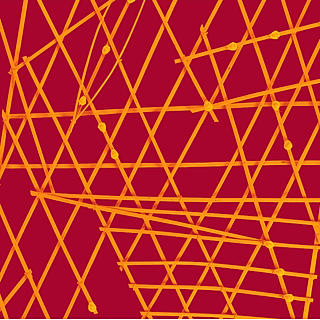The Origins of Writing: Part One
- Admin
- Aug 31, 2017
- 4 min read
Part One:
1) Fundamental Concepts
2) Sumerian & Egyptian Theories and Myths on the Origin of Writing
Fundamental Concepts
When dealing with the Origins of Writing, it's important that we distinguish the emergence of writing from the emergence of language.
The emergence of language among H. Sapiens (or perhaps sooner?), is a matter of great speculation. General consensus maintains, however, that human language evolved some 100,000-200,000 years ago.
The emergence of writing is an altogether separate question.
Writing was invented much later than the emergence of spoken language.
The Origin or Origins of Writing?
Most scholars concerned with the origins of writing reject the theory of 'Monogenism'– the theory of a single origin– in favour of the theory of 'Polygenism'.
Polygenism holds than writing emerged independently in different locations around the globe, as opposed to emanating from a single point of origin.
Support for a multi-origin theory is bolstered by worldwide archaeological discoveries of different writing systems, like Chinese logograms, and Egyptian or Mayan hieroglyphs.
This series will presume the validity of 'polygenism'.
Prewriting
Some scholars, such as Genevieve von Petzinger, see the earliest precursors to writing proper in the 32 cave signs used throughout Western Europe during the Upper Palaeolithic. Especially given that writing has its roots in the symbolic manipulation of graphic signs. It's no good merely doodling meaningless symbols, for writing to work it needs to be meaningful.
Another precursor to writing is the symbolic mark-making, such as the ostensible calendrical notations observed by Alexander Marshak in Palaeolithic Europe, in the form of vertical scratches on eagle wing-bones, purported to be tallies recording lunar appearances.
These scratches also involve the same motor actions as bona fide writing.
Proto-writing
Early writing systems based on even earlier traditions of graphic symbol use, such as those mentioned above, that can't yet be classified as real writing.
Examples include...
Jiahu Symbols (~6000 BCE) (China)
Vinča Symbols (~6000-5000 BCE) (Eastern Europe)
Scratching and Painting
The first-century grammarian Dionysios Thrax first noted the etymological and semantic relationship between "scratching" and "writing". This connection is also visible in the case of other languages, as the table below illustrates:
to Write ~ to Scratch
Epic Greek –> γρᾰ́φω (to scratch, cut into)
English "to Write" –> Old High German "Rizan" (to scratch)
Modern German "Schreiben" (to write) & "Einritzen" (to incise)
to Write ~ to Paint or to Scratch
Latin "Scribere"
Modern Icelandic "Skrifa" –> Old Icelandic (to Scratch or to Paint)
to Write ~ to Paint
Gothic "Meljan" (to Paint)
Pictography & The Rebus Principle
Pictogram: A pictorial symbol for a word or phrase
Rebus: Use existing symbols, such as pictograms, purely for their sounds regardless of their meaning, to represent new words.
Pictography
In ancient pictography a circle might represent "the sun", and then gradually assume other related abstract notions, such as "heat" or "light".

The Rebus Principle
Belief ("Bee-leaf")


Egyptian & Mayan Hieroglyphs functioned according to a similar system, whereby a word, composed of hieroglyphs, could be "sounded out".
Theories and Myths
Early Mesopotamian & Egyptian Myths
Ancient myths generally credit the gift of writing to divinity.
Arno Borst found that these accounts are common to all cultures in the process of completing the transition from being an oral society to becoming a literate one.
Just like in the Tower of Babel myth, God or gods granted the gift of writing to bridge humankind's growing separation from their origins.
While it would be all too easy to dismiss these early myths as the irrational effusions of an unscientific mind. In reality, what these myths represent as an attempt to grapple with complex thoughts and to instantiate them in as congruent a system of knowledge as possible.
For this reason, the details of the myths tend to fluctuate somewhat throughout history in accordance with shifting political and social systems.
Egyptian and Sumerian theologians believed in the creative power of the divine word, and its ability to impose order on the world:
"Your [Enlil's] word– it is plants, your word– it is grain, / Your word is the floodwater, the life of all lands."
Mesopotamia
Most Sumerians scribes attributed the power of writing to Nabû who was revered as "the inventor of the writing of scribes," "the unrivaled scribe," " the scribe of the gods, wielder of the reed-pen".
For this reason, the emblem of Nabû is a stylus and table, representing the act of writing.

Egypt
In Egypt, writing was also associated with several deities: A goddess, Seshat, and even a deity of perverse speech.
The principle inventor of writing in most documents, however, is Thoth or Tehuti who can be likened through his Egyptian name ("Dhwt(y)") ("messenger" or "measurer") to the Greek messenger of the gods, Hermes, and his Roman equivalent, Mercury.
Upon inventing writing, Thoth relates the news to King Thamus. But, instead of being

met with great applause, Thamus becomes concerned and begins pondering over the destructive potential of this new technology. Just like Plato, later, Thamus warns that writing will lead to the degradation of memory and "will produce forgetfulness in the minds of learners". Adding that what Thoth is offering is not truth, but rather "pretend wisdom", a "mentioning-enhancer" rather than a "memory enhancer".
Thoth was the god of supreme intelligence, who transformed words into objects of the material world. As the creator of writing, he is therefore aligned with the processes of administration and, more broadly, with the idea of the keeper of established order, because lawmaking became vastly facilitated with the invention of writing.
PART TWO of this series will deal with the invention of writing itself from earlier accounting practices.
What do you think? Please share your thoughts in the comment section down below.





























Comments